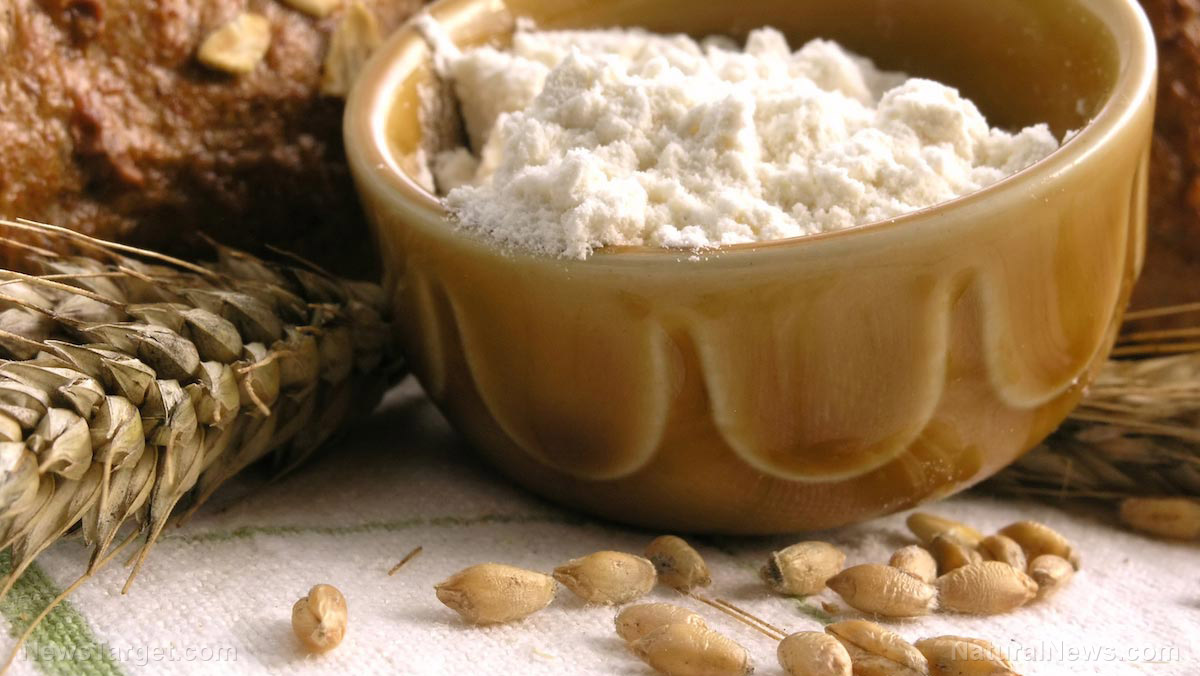
Advertisement
Flour has long been considered a shelf-stable ingredient, meaning it can be stored safely at room temperature. Unfortunately, flour actually has a shorter shelf life than you may think. Simply put, flour can and will eventually go bad.
The thing is, it can be hard to tell whether flour has gone bad. Not all flour bags and packages come with a best-by date. In addition, some people like to store their flour in some sort of container for easier access.
Before taking out your measuring cups and preheating your oven, here’s what you need to know about flour – when it expires, how to store it properly and more.
Different kinds of flour and their uses
There are several factors that influence flour’s shelf life. Most flours can remain fresh at room temperature for three to eight months. That said, shelf life can vary depending on the kind of flour and how it is stored.
Flours typically differ based on their level of processing, which greatly affects shelf life. The source of the flour, such as wheat or gluten-free ingredients like arrowroot, can also impact its shelf life.
Here are the three most popular kinds of flour, their uses and their shelf life:
1. White all-purpose flour
Considered the most basic flour, white all-purpose flour contains a moderate amount of protein (gluten). Like other white flours, all-purpose flour is made from just the endosperm of the wheat grain. The nutrients in wheat grains are found in the germ and bran. This is why all-purpose flour has virtually no nutrients.
All-purpose flour isn’t the most nutritive choice for baking, but you can still use it around your home. Sprinkle a line of flour anywhere you have ants. Ants don’t like the taste and texture of the flour. You can also use all-purpose flour to buff stainless steel surfaces. In a pinch, you can also use flour as a kind of dry shampoo.
Because of how much it has been processed, all-purpose flour lasts between six to eight months on the shelf. It can also last up to a year if refrigerated and two years if frozen.
2. Whole-wheat flour
Unlike white all-purpose flour, whole-wheat flour is made with all three parts of the grain: the endosperm, the bran and the germ. The bran and germ contain beneficial oils, which deteriorate upon exposure to light, moisture or air. Therefore, whole-wheat flour is more vulnerable to spoilage.
Whole-wheat flour is great for making bread. You can also use whole-wheat flour to make homemade dinner rolls, flatbreads, pizza dough and more. Take note that bread and pastries can get a little dense if you use whole-wheat flour.
Because wheat germ is prone to rancidity, whole-wheat flour can only be stored for up to three months at cool room temperature. If you want to store whole-wheat flour for longer, transfer it to an airtight container and place it in the freezer. This helps keep it away from moisture and water to prevent the formation of mold.
3. Gluten-free flour
Gluten-free flours are ideal for people with celiac disease, an autoimmune condition that causes immune cells to attack the small intestine upon consumption of foods with gluten. Most gluten-free flours are made from gluten-free grains, such as oats and buckwheat, nuts and starches.
When using gluten-free flour, bakers will sometimes add thickeners, such as xanthan gum and guar gum to simulate the chewiness associated with gluten.
Gluten-free flours are more vulnerable to mold because of their high moisture content. Most can be stored for one to two months in the cupboard, four to six months in the refrigerator and up to one year in the freezer. Flours made from nuts should be refrigerated because they have the shortest shelf life due to their oils.
Tips for storing flour
The shelf life of flour also depends greatly on how it is stored. For the most part, flours store well if kept in a sealed container in a cool, dry and dark area. If you’re transferring your flour to a plastic container before stashing it away, label your flour with the best-by date on the original packaging.
The original paper packaging that most flours come in should be fine for long-term storage as long as it hasn’t been opened yet. Remember: once opened, the shelf life decreases. That said, you should also avoid refrigerating or freezing flour in its original paper packaging because paper is porous. If stored in this manner, the flour could absorb odors or moisture.
If storing flour in the refrigerator or freezer, fill the container to get rid of as much air as possible. In addition, you can tightly wrap flours in blocks and store them in the freezer. This is best for when you have large quantities of flour.
Finally, you should buy smaller quantities of flour if you don’t always cook or bake with them. This way, you’ll only use what you need and you won’t have to worry about flour spoiling.
Signs that flour has gone bad
The best way to tell whether flour has gone bad is to smell it. Fresh flour has a neutral odor, while rancid flour smells stale, musty or sour. Its color may also look uneven. If your flour smells, throw it away.
Rancid flour also attracts insects, which is a sign that the flour has been exposed to moisture. This is the worst-case scenario. So if you find insects in your flour bag, throw it away immediately.
For the most part, eating expired flour doesn’t have significant consequences, and there are hardly any studies on the effects of eating rancid flour. If the flour you’re using smells stale, chances are you’ll only end up with baked goods that don’t taste good.
That said, eating expired flour can make you sick if it contains mycotoxins, which are produced by mold. Some studies have linked mycotoxins to serious conditions, including liver disease and cancer. When consumed, mycotoxins can trigger vomiting and diarrhea.
But don’t fret. Flour with enough mold to produce mycotoxins will likely have a strong sour smell that you’d definitely get a whiff of as soon as you open the bag or container.
Flour is a versatile ingredient that’s shelf-stable for the most part. Depending on the kind of flour and how it’s been stored, flour can last between one month to two years. Be sure to throw out flours with unpleasant odors, discoloration or molds.
Sources:
Advertisements







